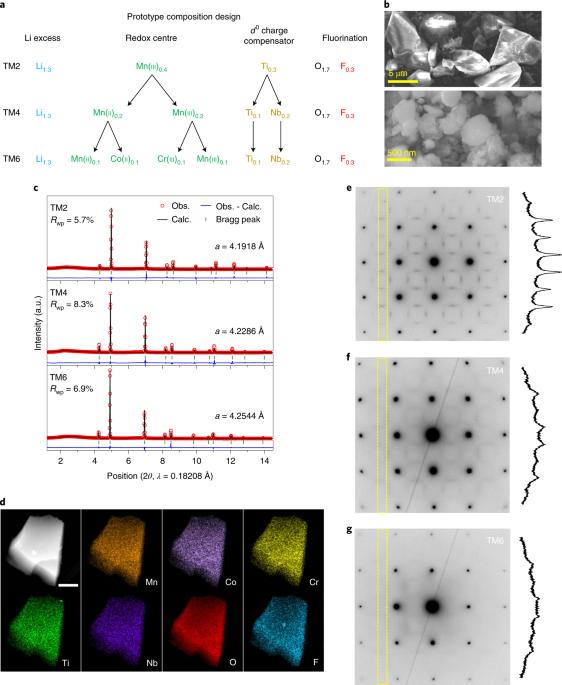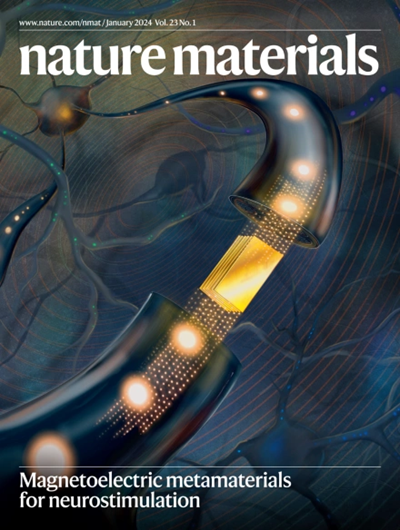Cation-disordered rocksalt-type high-entropy cathodes for Li-ion batteries
IF 37.2
1区 材料科学
Q1 CHEMISTRY, PHYSICAL
引用次数: 206
Abstract
High-entropy (HE) ceramics, by analogy with HE metallic alloys, are an emerging class of solid solutions composed of a large number of species. These materials offer the benefit of large compositional flexibility and can be used in a wide variety of applications, including thermoelectrics, catalysts, superionic conductors and battery electrodes. We show here that the HE concept can lead to very substantial improvements in performance in battery cathodes. Among lithium-ion cathodes, cation-disordered rocksalt (DRX)-type materials are an ideal platform within which to design HE materials because of their demonstrated chemical flexibility. By comparing a group of DRX cathodes containing two, four or six transition metal (TM) species, we show that short-range order systematically decreases, whereas energy density and rate capability systematically increase, as more TM cation species are mixed together, despite the total metal content remaining fixed. A DRX cathode with six TM species achieves 307 mAh g−1 (955 Wh kg−1) at a low rate (20 mA g−1), and retains more than 170 mAh g−1 when cycling at a high rate of 2,000 mA g−1. To facilitate further design in this HE DRX space, we also present a compatibility analysis of 23 different TM ions, and successfully synthesize a phase-pure HE DRX compound containing 12 TM species as a proof of concept. High-entropy ceramics are solid solutions offering compositional flexibility and wide variety of applicability. High-entropy concepts are shown to lead to substantial performance improvement in cation-disordered rocksalt-type cathodes for Li-ion batteries.

用于锂离子电池的阳离子有序岩盐型高熵阴极
高熵 (HE) 陶瓷与高熵金属合金类似,是一类新兴的由大量物种组成的固溶体。这类材料具有成分灵活性大的优点,可广泛应用于热电、催化剂、超离子导体和电池电极等领域。我们在此表明,HE 概念可大幅提高电池阴极的性能。在锂离子阴极中,阳离子有序盐(DRX)型材料因其化学灵活性而成为设计 HE 材料的理想平台。通过比较一组含有两种、四种或六种过渡金属(TM)的 DRX 阴极,我们发现,尽管总金属含量保持不变,但随着更多 TM 阳离子种类混合在一起,短程有序性系统性地降低,而能量密度和速率能力系统性地提高。含有六种 TM 的 DRX 阴极在低速率(20 mA g-1)下可达到 307 mAh g-1(955 Wh kg-1),而在 2,000 mA g-1 的高速率下循环时可保持超过 170 mAh g-1。为了促进 HE DRX 领域的进一步设计,我们还对 23 种不同的 TM 离子进行了相容性分析,并成功合成了含有 12 种 TM 的相纯 HE DRX 复合物,作为概念验证。高熵陶瓷是一种固体解决方案,具有成分灵活性和广泛的适用性。研究表明,高熵概念可大幅提高阳离子有序盐岩型锂离子电池阴极的性能。
本文章由计算机程序翻译,如有差异,请以英文原文为准。
求助全文
约1分钟内获得全文
求助全文
来源期刊

Nature Materials
工程技术-材料科学:综合
CiteScore
62.20
自引率
0.70%
发文量
221
审稿时长
3.2 months
期刊介绍:
Nature Materials is a monthly multi-disciplinary journal aimed at bringing together cutting-edge research across the entire spectrum of materials science and engineering. It covers all applied and fundamental aspects of the synthesis/processing, structure/composition, properties, and performance of materials. The journal recognizes that materials research has an increasing impact on classical disciplines such as physics, chemistry, and biology.
Additionally, Nature Materials provides a forum for the development of a common identity among materials scientists and encourages interdisciplinary collaboration. It takes an integrated and balanced approach to all areas of materials research, fostering the exchange of ideas between scientists involved in different disciplines.
Nature Materials is an invaluable resource for scientists in academia and industry who are active in discovering and developing materials and materials-related concepts. It offers engaging and informative papers of exceptional significance and quality, with the aim of influencing the development of society in the future.
 求助内容:
求助内容: 应助结果提醒方式:
应助结果提醒方式:


